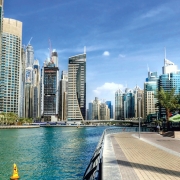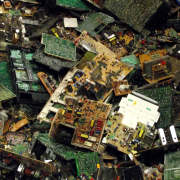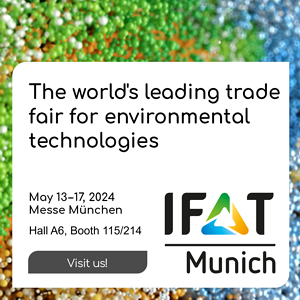Investing in Food Waste Treatment Pays Off
The value of food lost or wasted annually at the global level is estimated at 1 trillion US-Dollar, according to the Food and Agriculture Organization of the United Nations. Prevention is the best and most frequently mentioned method to reduce food waste and as much as the public consciousness increases, the number of initiatives to inhibit the production rises. But what happens to the almost existing and captured food waste?
The food losses per capita differ between the global regions, lead by North America and Europe with 280-300 kg/year, followed by Industrialized Asia, Latin America, North Africa/West and Central Africa with 220-240 kg/year and finally Sub-Saharan Africa and South/Southeast Asia with 120-170 kg/year. The per capita food wasted by consumers in Europe and North-America lies at 95-115 kg/year, while this figure in sub-Saharan Africa and South/Southeast Asia is only 6-11 kg/year. Even more interesting are the relations between the production to retailing and the consumption data. While developing countries lose more than 40 percent of the food at post-harvest and processing, more than 40 percent of the food losses in industrialized countries occur at retail and consumer levels, the Food and Agriculture Organization found out. These numbers are confirmed by figures from Canada, where approximately 47 percent of food wasted occurs at home. According to the Toronto Food Policy Council, the rest of 53 percent is found to be generated along the value chain when food is produced, processed, transported, sold, and prepared and served in commercial and institutional settings. Of course, the waste production volumes differ by the groups of commodity. The greatest amount is produced of cereals in Europe, North America, Industrialized Asia and South / Southeast Asia. Fruits and vegetables are mostly wasted in Industrialized Asia, South / Southeast Asia and Europe. Dairies, roots and tubers and oil crops and pulses are less wasted, meat and fish rarely.
USA: Only 2.6 percent recovered
What happens to the existing waste? A study in 2010 certifies that in the US over 97 percent of food waste were estimated to be buried in landfills. By numbers, food waste accounted for 28.8 million tons of the generated 230 million tons municipal solid waste. The US EPA estimated that in 2008 over 60 percent of the generated yard waste was composted, but only 2.6 percent of the food waste was recovered. Source separated organics were treated by aerobic composting mostly in one of the 273 US composting facilities. Anaerobic digestion at that time was merely offered by a medium-scaled facility. The study balances “a growing interest in the diversion of food waste from landfills and the challenge is to develop implementation strategies that are both scaleable and economical“.
Meanwhile, the federal government, led by EPA and the United States Department of Agriculture, is following a United States Food Loss & Waste 2030 Reduction Goal focusing on the reduction by 50 percent over the next 15 years. However, latest figures from December 2016 published by the US EPA indicate 117,259,427 tons of food waste collected at curbside, 621,500 tons diversion through donation, 1,569,952 tons composted, 125,000 tons used for animal feed, more than 347 composting sites for food waste, 239 farm-based anaerobic digestion systems in operation, more than 1,200 water resource recovery facilities with anaerobic digesters, and nine food disposal bans throughout the United States.
Australia: Three major food recovery services
Australia has to fight against three main barriers to effective food waste management: the complexity of food production, purchasing and consumption patterns, a lack of established infrastructure and technology for the alternative treatment of food waste and a lack of consumer awareness. Meanwhile, the Australian Government is promoting a strategic dialogue on food waste outcomes and standards and is implementing the Source Separated Organic Waste method under the Emissions Reduction Fund. State and territory governments, the private sector and the not-for-profit sector are largely working to address food loss and waste without Australian Government intervention. So does the food processing industry’s peak body, the Australian Food and Grocery Council, fixing a target to reduce waste to landfill by 40 percent by 2020. A substantial amount of food is diverted from landfill through three major food recovery services Foodbank, OzHarvest and SecondBite. In 2014 – 2015 these charities saved and provided over 72 million meals to the community that would otherwise have gone to landfill.
Switzerland: 75 percent to animal feed
In October 2016, the Swiss Bundesamt für Umwelt (BAFU, Federal Department of Environment) published a comprehensive study on “Organic losses of the food industry“ (without fish- and meat-production). It shows that during food production 36 percent turn out to be preventable or inevitable waste. The annually loss of 500,000 tons contains 125,000 unavoidable tons of inedible parts like bones or peel waste. For 20 percent of the remaining 375,000 tons – whey or bran – a sales market lacks, and for another 20 percent – edible food – the state of technology cannot avoid wasting.
Concerning the accumulated waste, all branches recover the lion‘s share of organic waste as animal feed – on average 75 percent, differing between 100 percent of wasted tuber and 20 percent of waste from the production of convenience products. About 12 percent are recovered to biogas, 10 percent are composted. Three percent find a way to incineration plants, and donated food does not reach the one percent bench. Finally the study balances a high sensitization of the Swiss food production industry on food losses and confesses several efforts to minimize the losses.
UK: Approximate figures for disposal routes
In the United Kingdom, an estimated 7.3 million tons of household food waste was thrown away in 2015. So food with a retail value of around 13 billion Pounds was thrown away rather than being eaten in 2015, UK`s Waste & Resources Action Programme (WRAP) announced in January 2017. Except collection figures by local authorities, food losses by disposing down the sewer, home composting or feeding to animals were merely calculated. Latest (scarce) information on the disposal routes date from 2012. 7.0 million tons of food and drink waste were then thrown away by households.
Two thirds (4.7 million tons) of that household food and drink waste was collected by local authorities, mostly collected in curbside ‘residual’ or general waste. But more than half a million tons was in targeted collections of food waste, meaning it could be treated to generate energy and useful digestate or compost. 1.6 million tons – around a fifth – was disposed of via the sewer, with drinks and dairy products making up more than half of this. The remainder was either composted at home (0.51 million tons) or fed to animals (0.28 million tons).
The figures of Scotland‘s food waste are equally approximate. According to a study by Zero Waste Scotland in Autumn 2016, 65 percent of the 410,000 tons of food and drink waste went into the municipal waste management system and are dealt with by local authorities. The remainder was disposed of by other routes – most significantly home composting and down the sink: 150,000 tons were disposed to the sewer and composting and feed for animals comprised 69,000 tons.
Mostly composting and anaerobic digestion
According to WRAP, it seems that the mainly used processes to recycle food waste in the United Kingdom are in-vessel composting (IVC) and anaerobic digestion (AD). Both treatment methods including biogas technology are used too in the Middle East, especially in the Gulf Cooperation Council region, where the mushrooming of hotels, restaurants, fast-food joints and cafeterias resulted in the generation of huge quantities of food wastes, the environment protection platform EcoMena notifies. In Singapore, the National Environment Agency is interested in another strategy to recycle food waste. Currently homogeneous food waste from food manufacturers is already segregated at source and sold to recyclers for conversion into animal feed. The agency wants more on-site food waste segregation by hotels, shopping malls and schools and the conversion of that waste into compost for landscaping purposes or water for non-potable use. A pilot project was launched to assess the economic viability and operational feasibility of collecting and transporting source-segregated food waste to an off-site treatment facility. There the food waste will be co-digested with used water sludge and produce biogas from the anaerobic digestion process.
A 14 Euro return
In January 2017 WRAP reminded of the Courtauld Commitment 3 target to reduce food and packaging waste by 33 percent until 2015. The target was met, 219,000 tons of food and packaging waste were prevented, the value of the food savings alone were worth an estimated 100 million Pounds. This resembles what a study from March 2017 conducted by the World Resources Institute found out: Reducing food loss and waste can generate a triple win – for the economy, for food security, and for the environment. Even more: For every Euro the reviewed companies invested in combating food loss and waste reduction they realized a 14 Euro return. Or as the Dutch Rabobank expressed it: “Investing in food waste pays off“. This applies to the life circle of food from production to consumption as well as to food waste treatment. The latter offers possibilities and chances, not only to key players like Remondis SE & Co. KG, Republic Services Inc., Waste Management Inc., Indaver N.V., Skip Shapiro Enterprises, LLC, Suez Environnement and Veolia Environnement.
Photo: highwaystarz / fotolia.com
GR 22017










